Abstract
Lung denervation in ducks, by sectioning all vagal branches to one lung following mid-cervical vagotomy on the other side, resulted in immediate bradycardia and fall in breathing frequency. Some 3-5 weeks after lung denervation breathing frequency was within the normal range but the lung inflation reflex, present in unilaterally vagotomized sham-operated ducks, was abolished. During 2 min dives there were no significant differences between sham-operated and denervated ducks in heart rate, arterial blood pressure, blood gas tensions and pH(a). However, during recovery from diving heart rate increased more slowly in denervates and breathing rate was significantly below that attained by shams, although tidal volume rose to a maximum increase of 139% to a maximum of 225% of the pre-dive value in denervates in contrast to a maximum increase of 139% of pre-dive in sham-operated ducks. Both sham-operated and denervated ducks exhibited a significant fall in diastolic blood pressure 60 sec after emergence...
Full text
PDF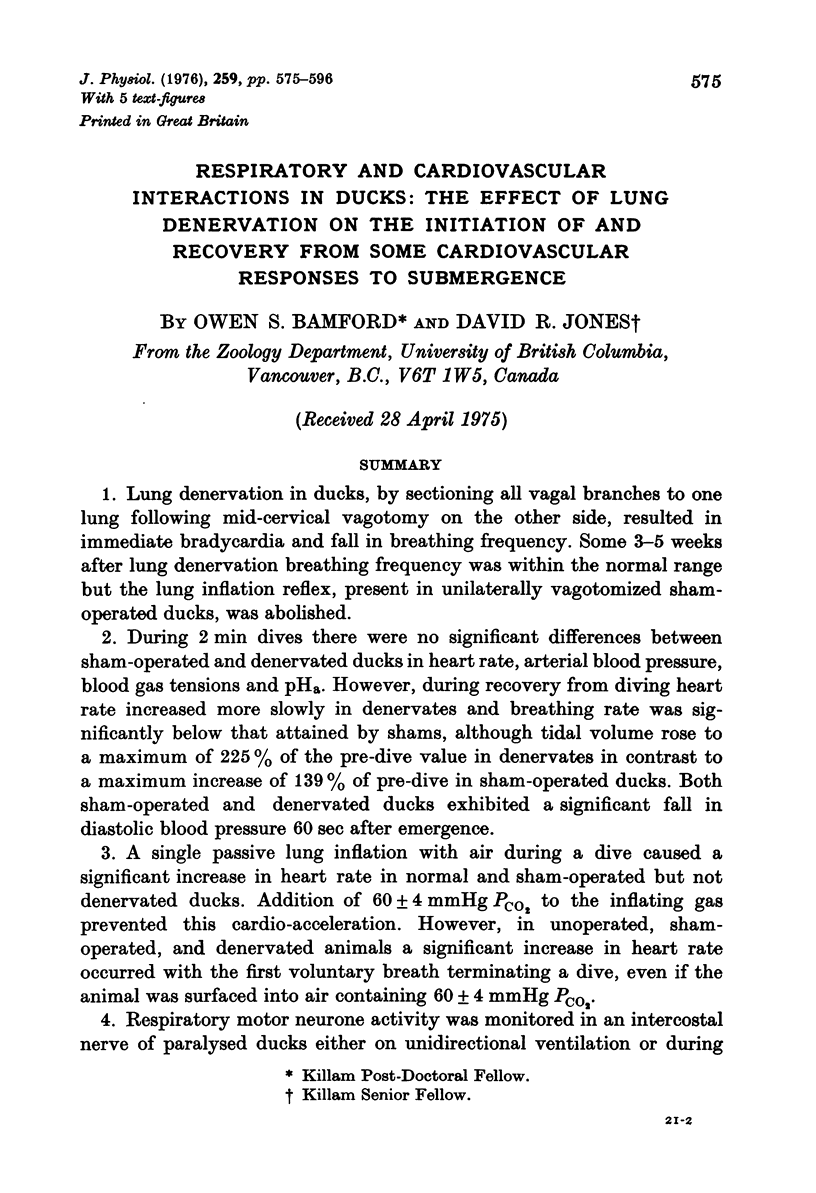
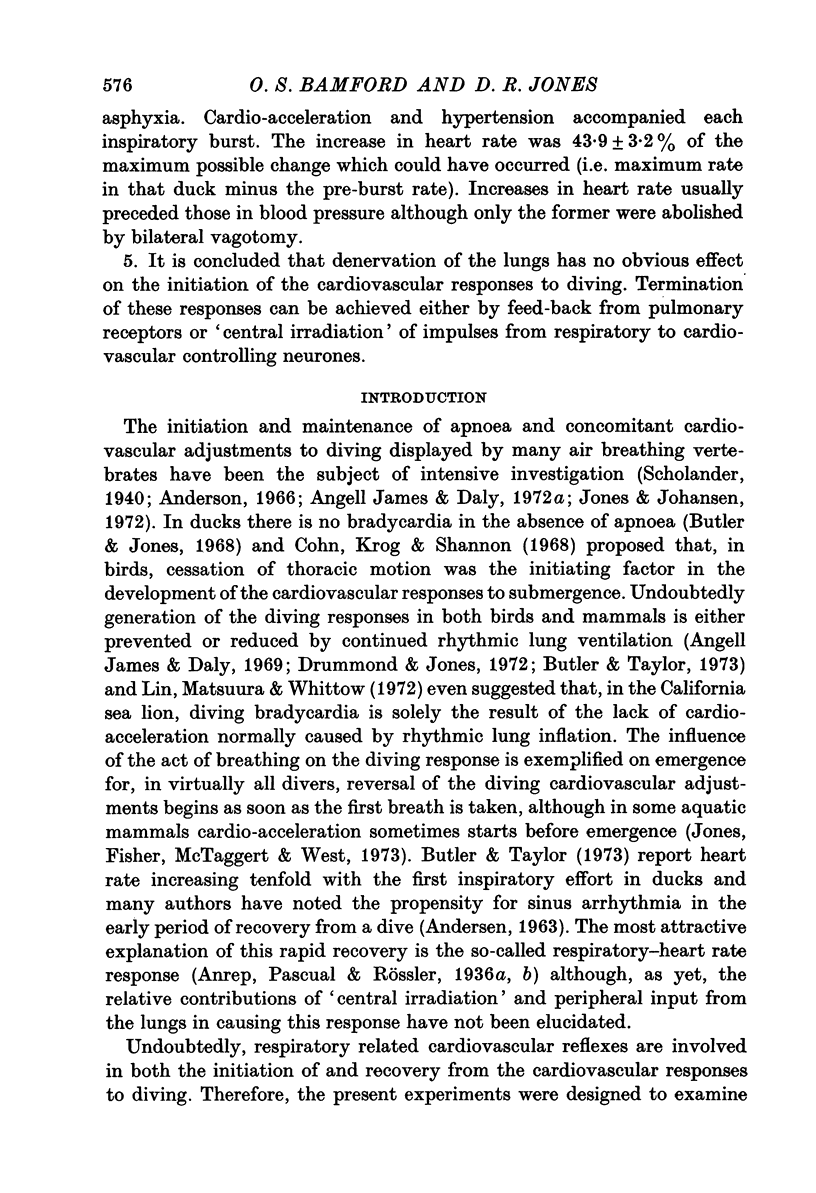
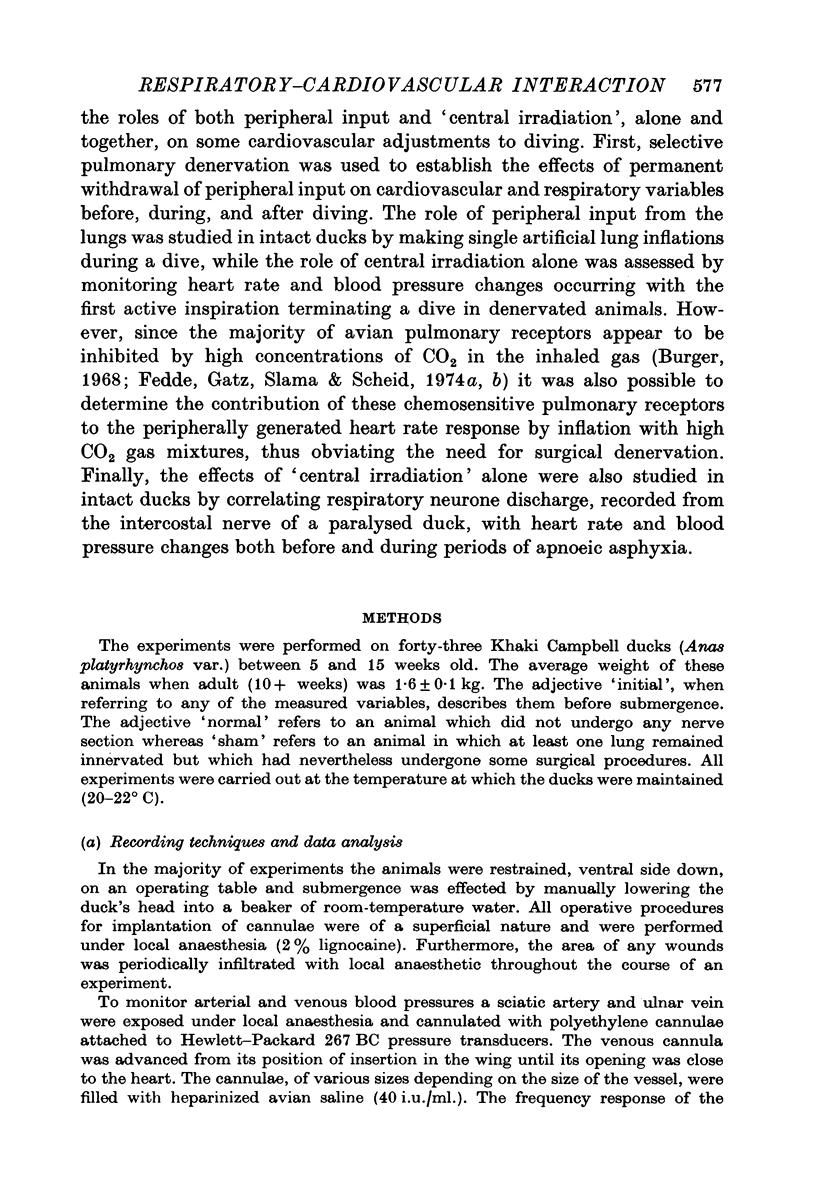
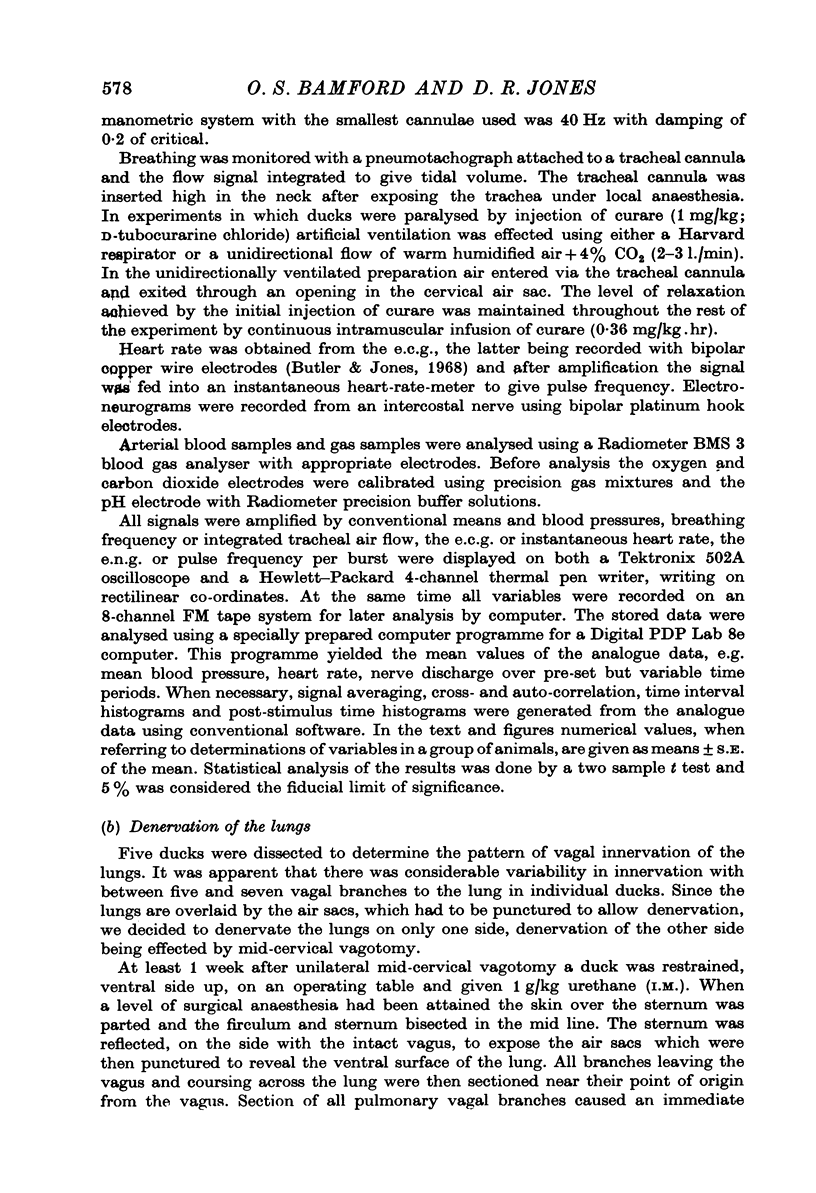
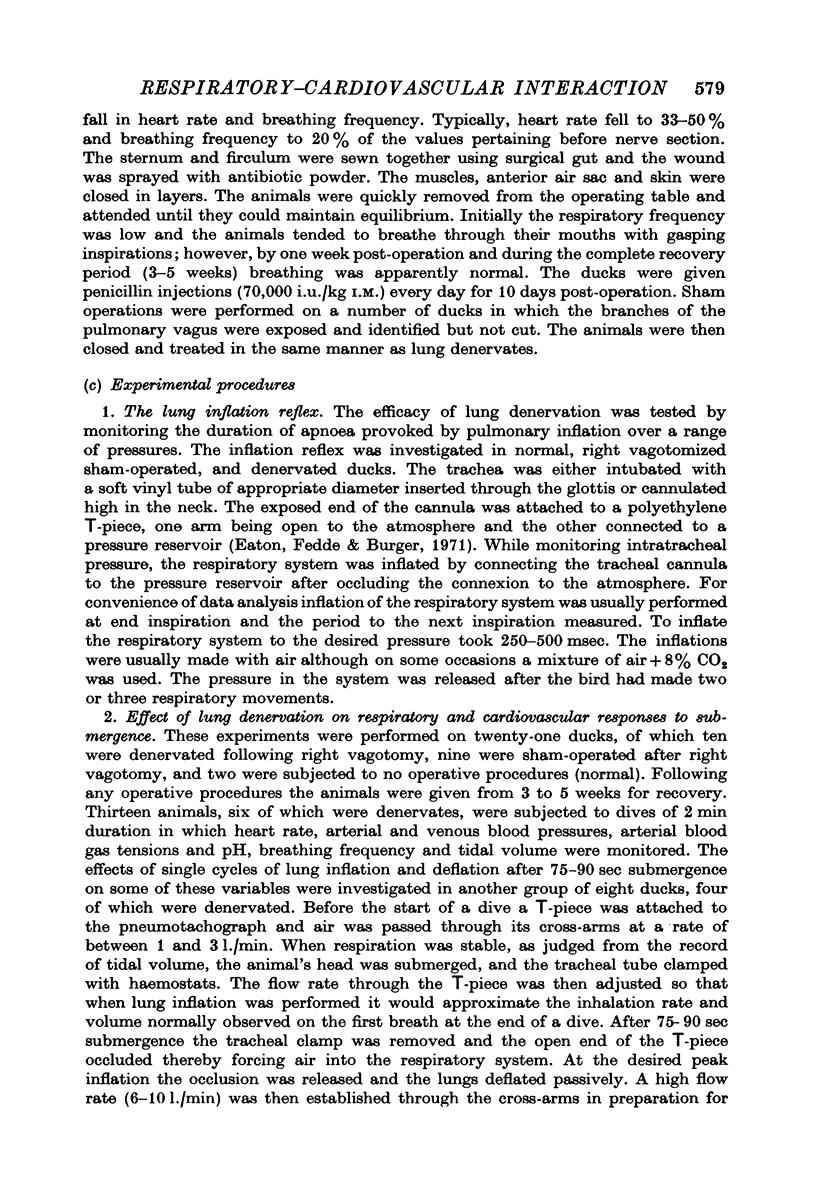
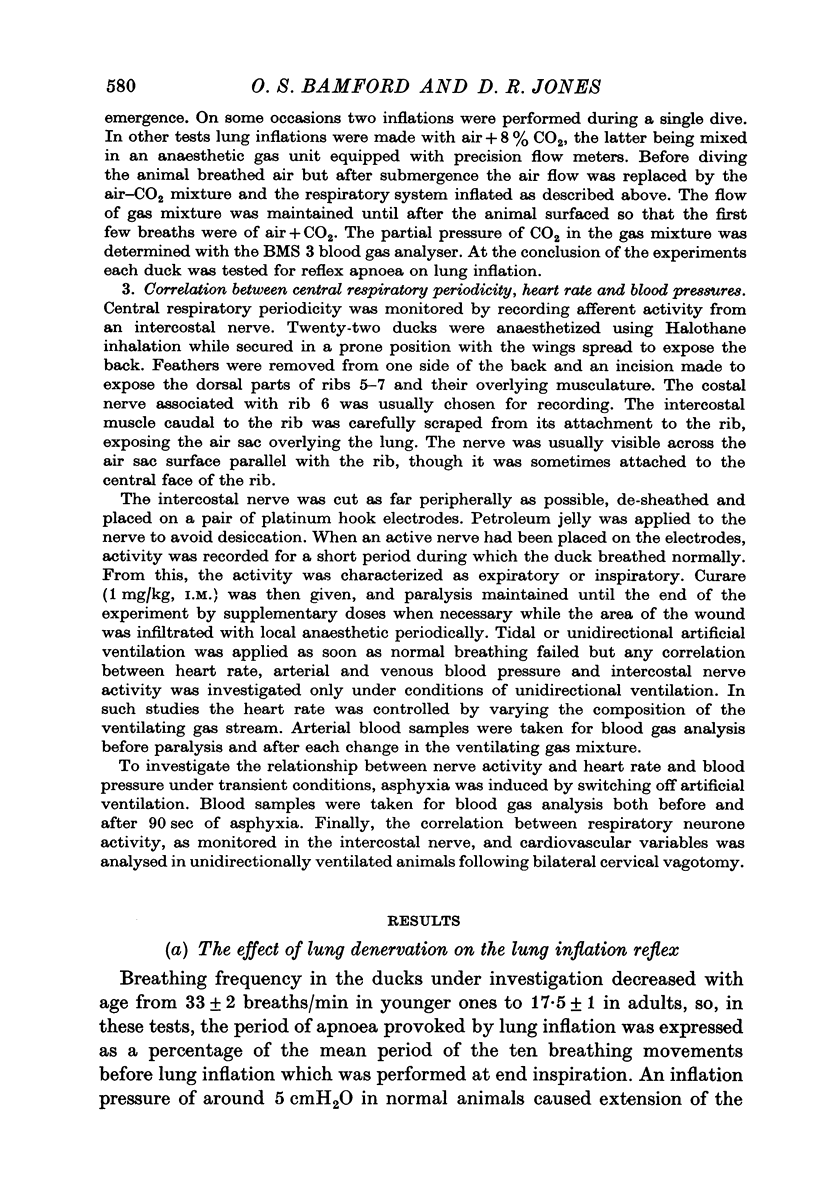
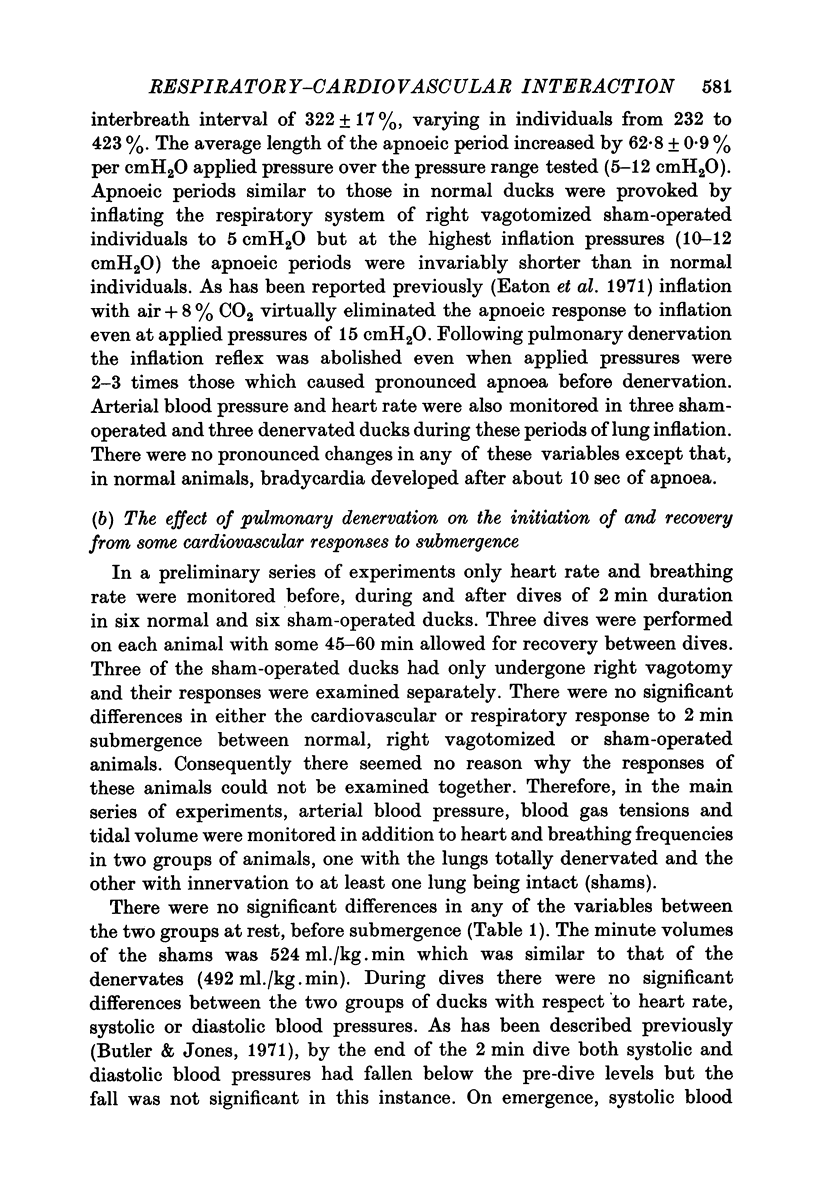
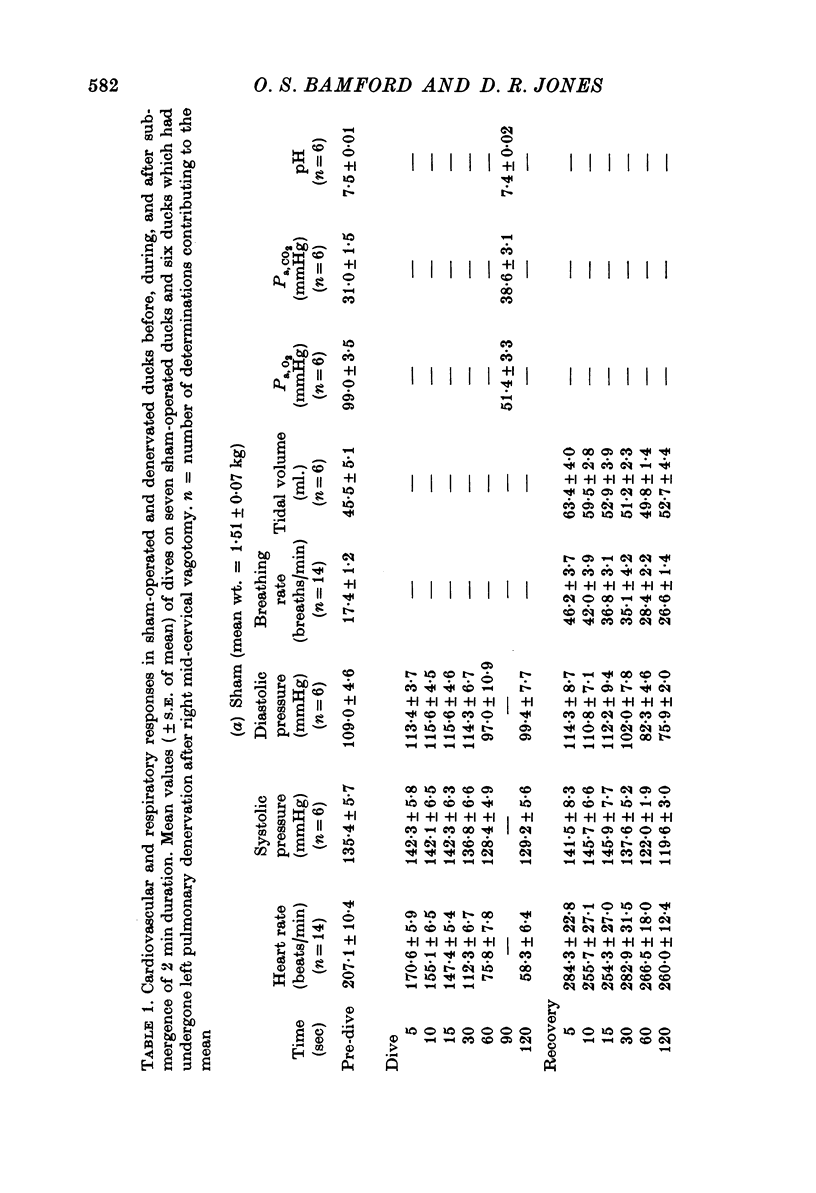
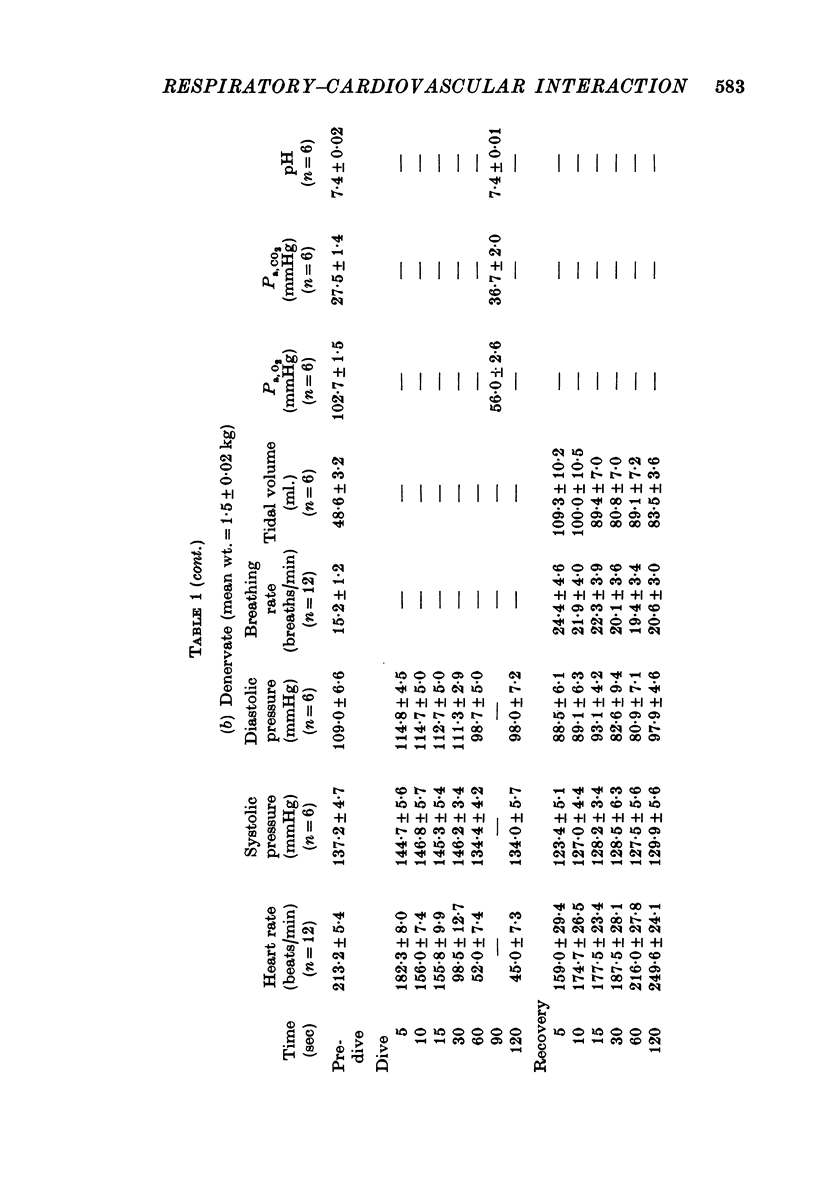
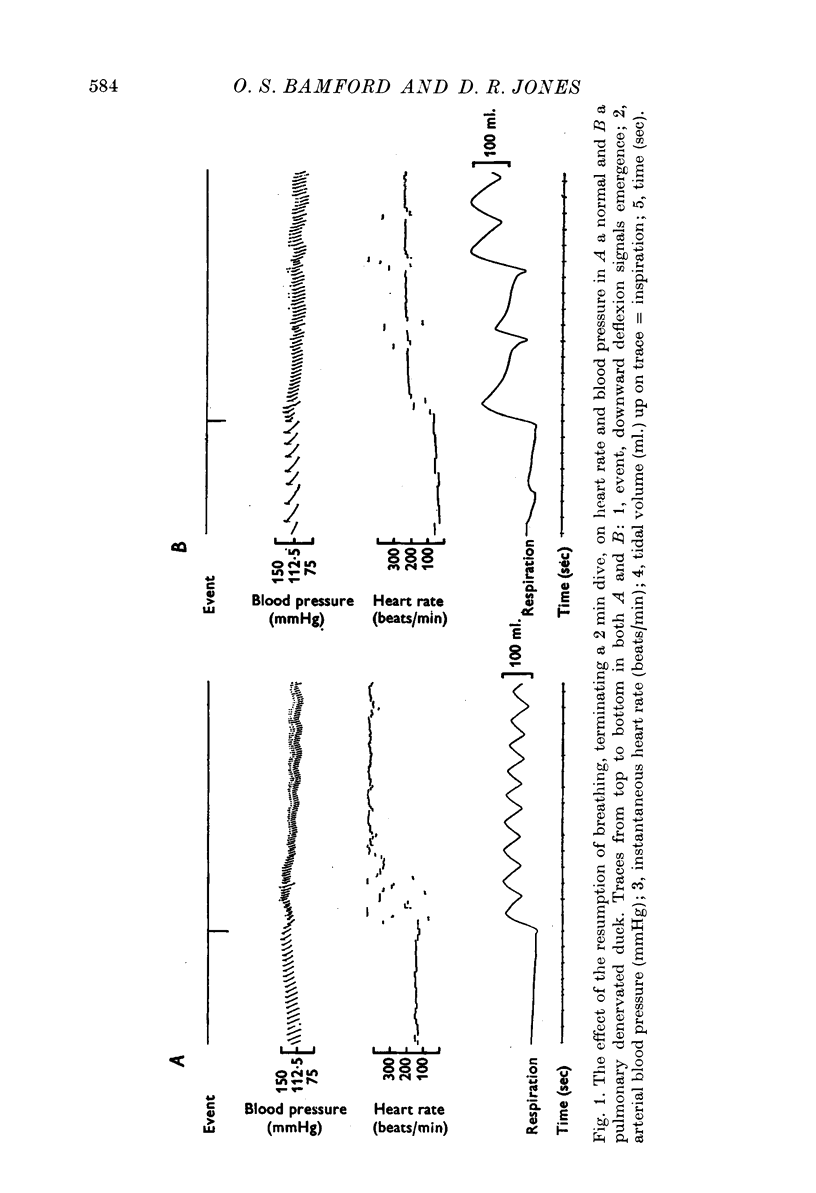
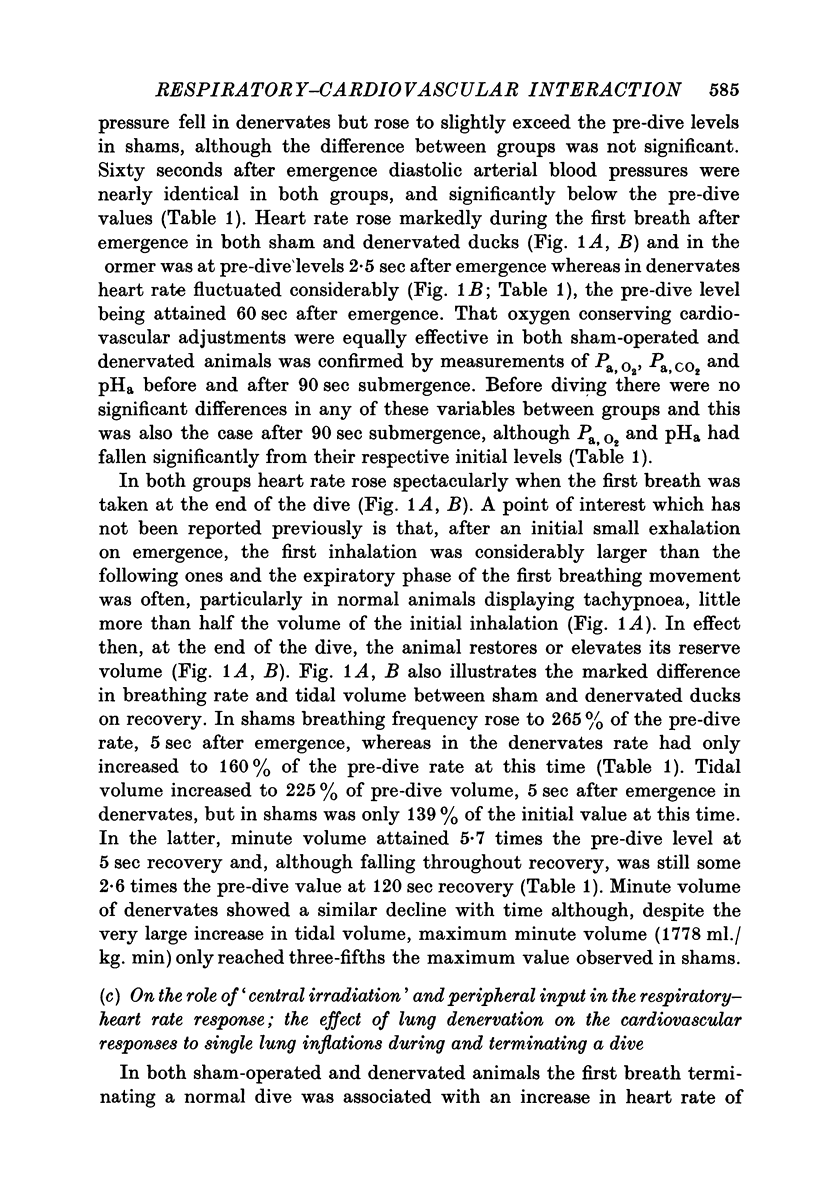
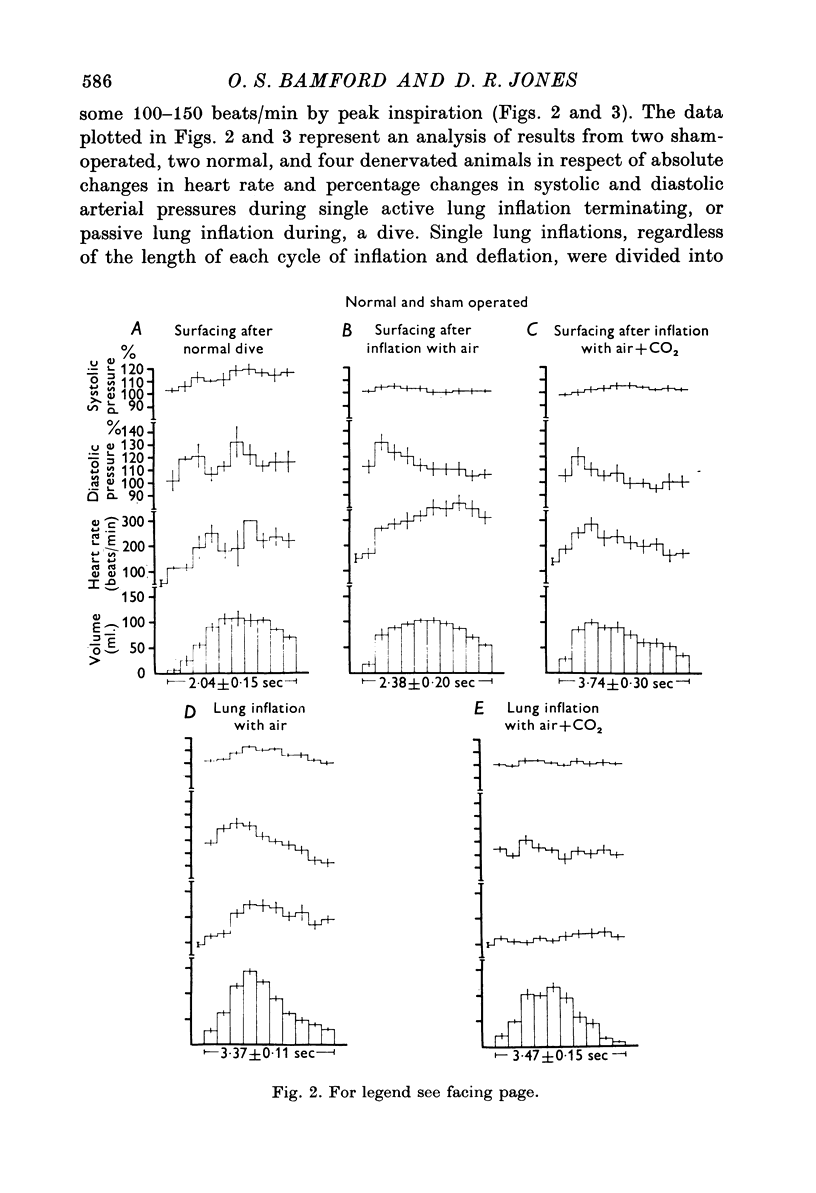

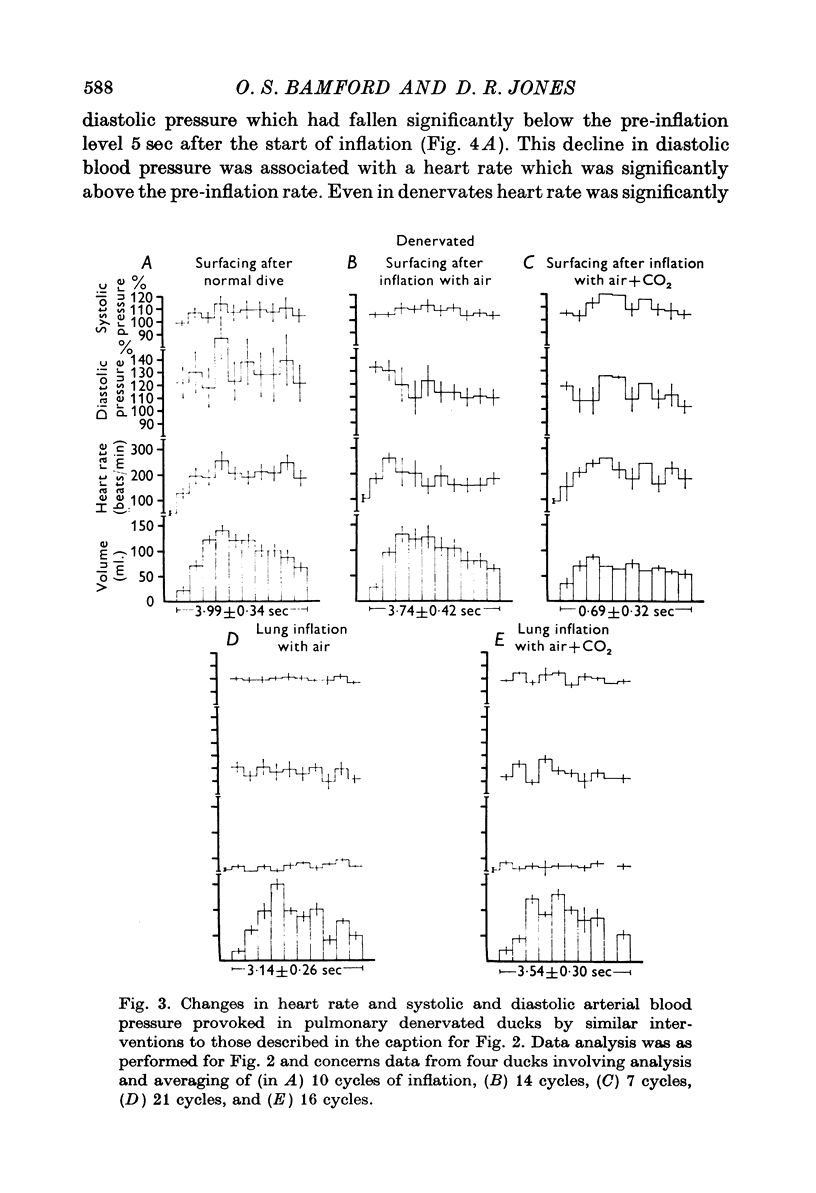
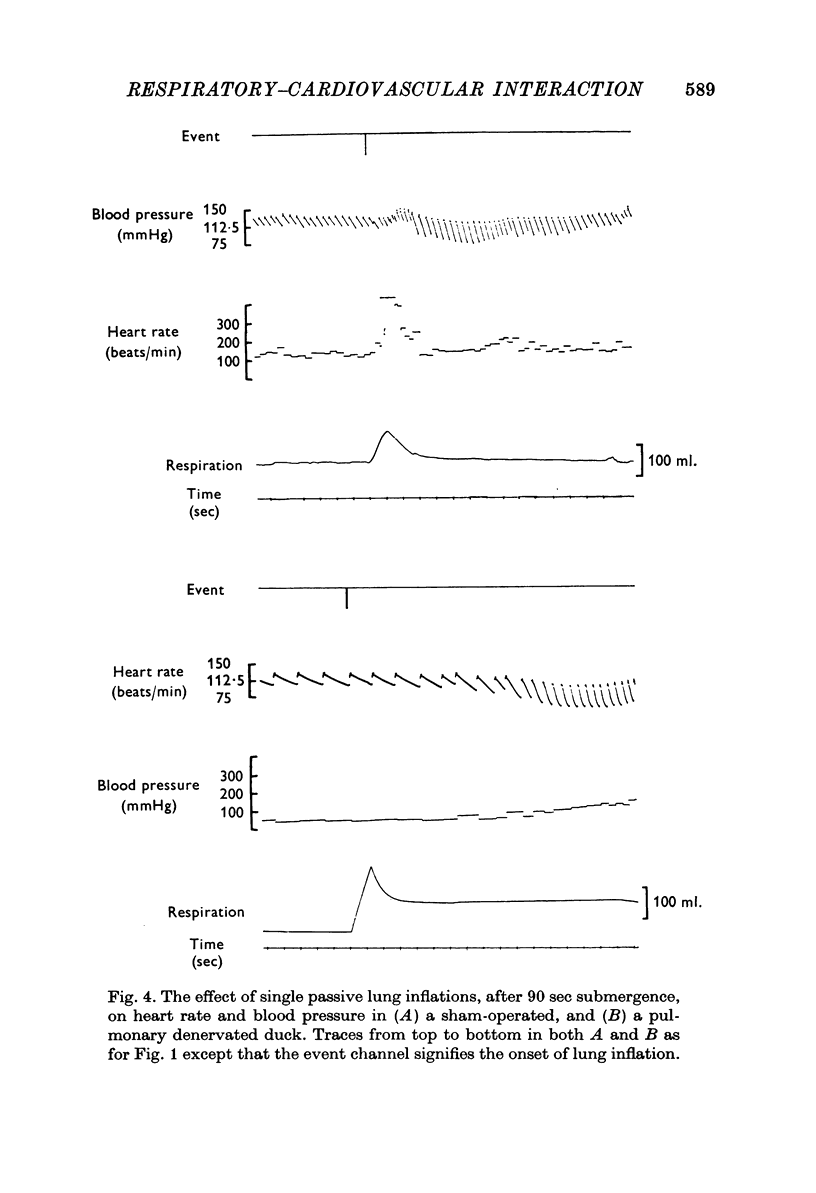
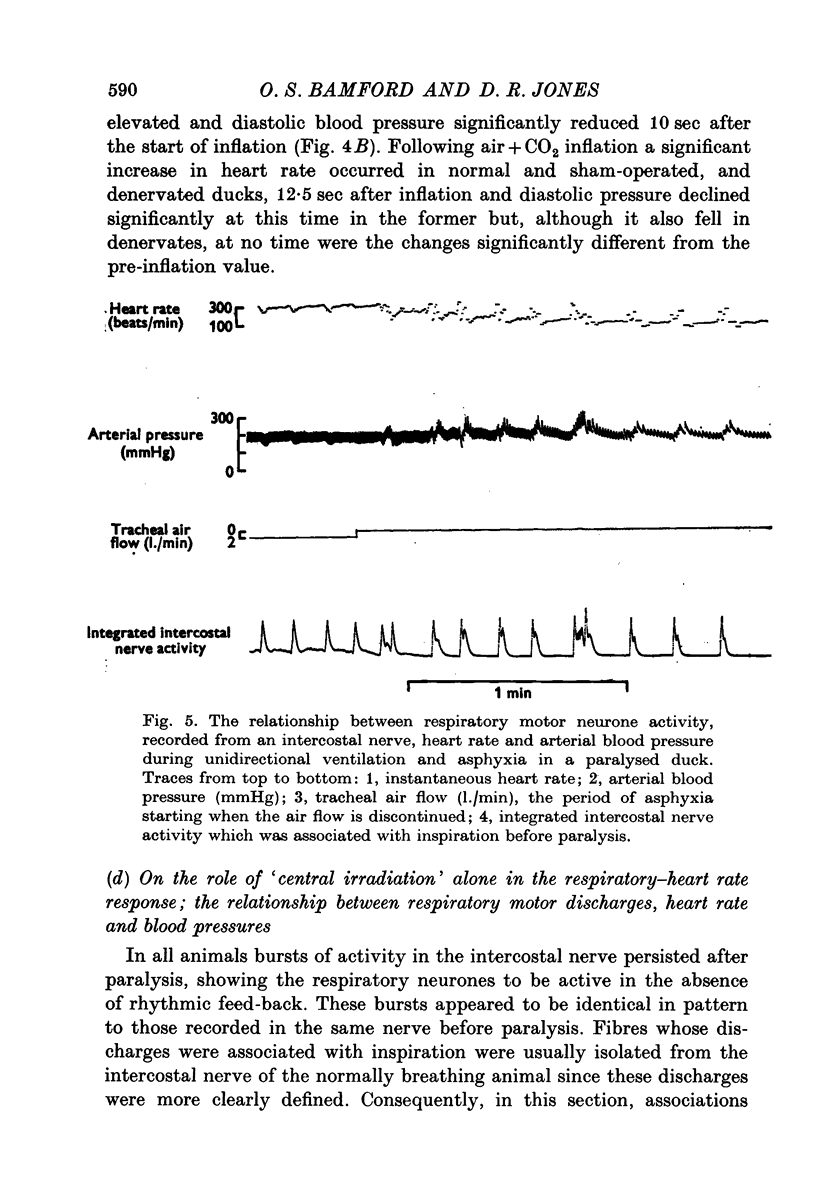

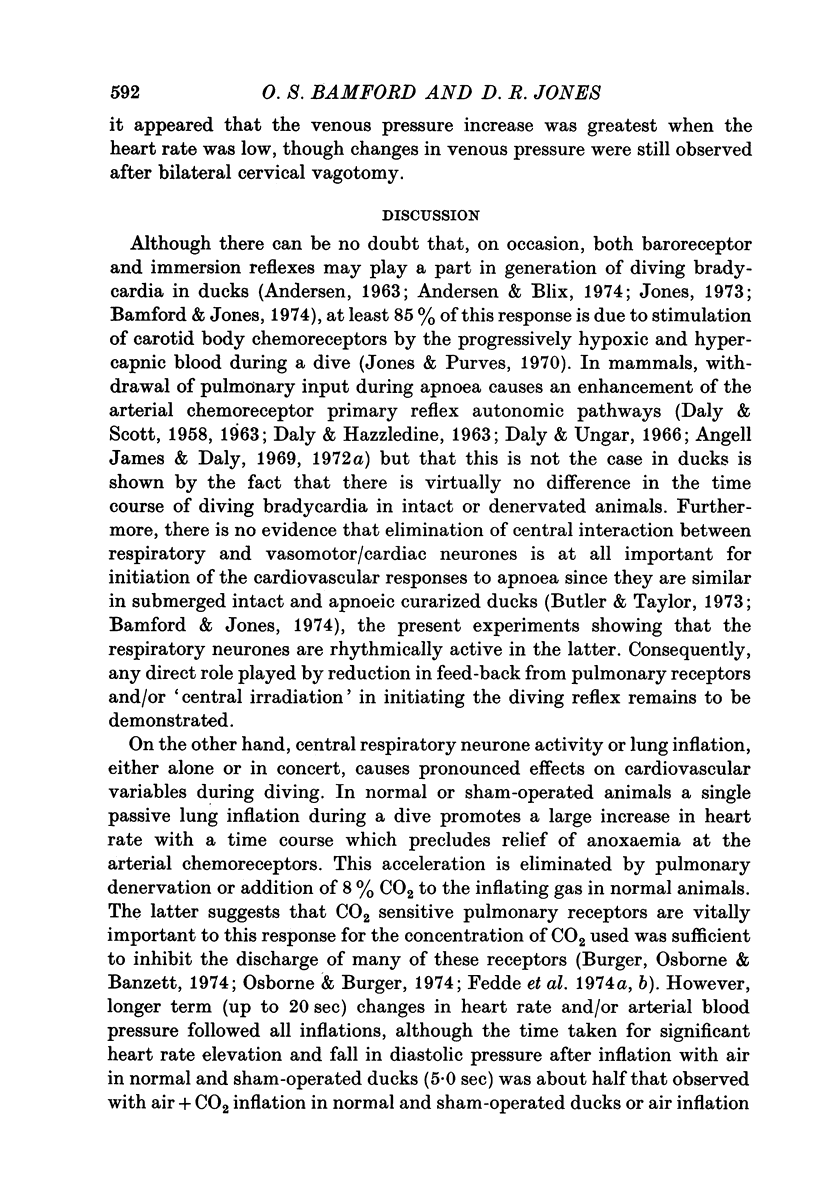
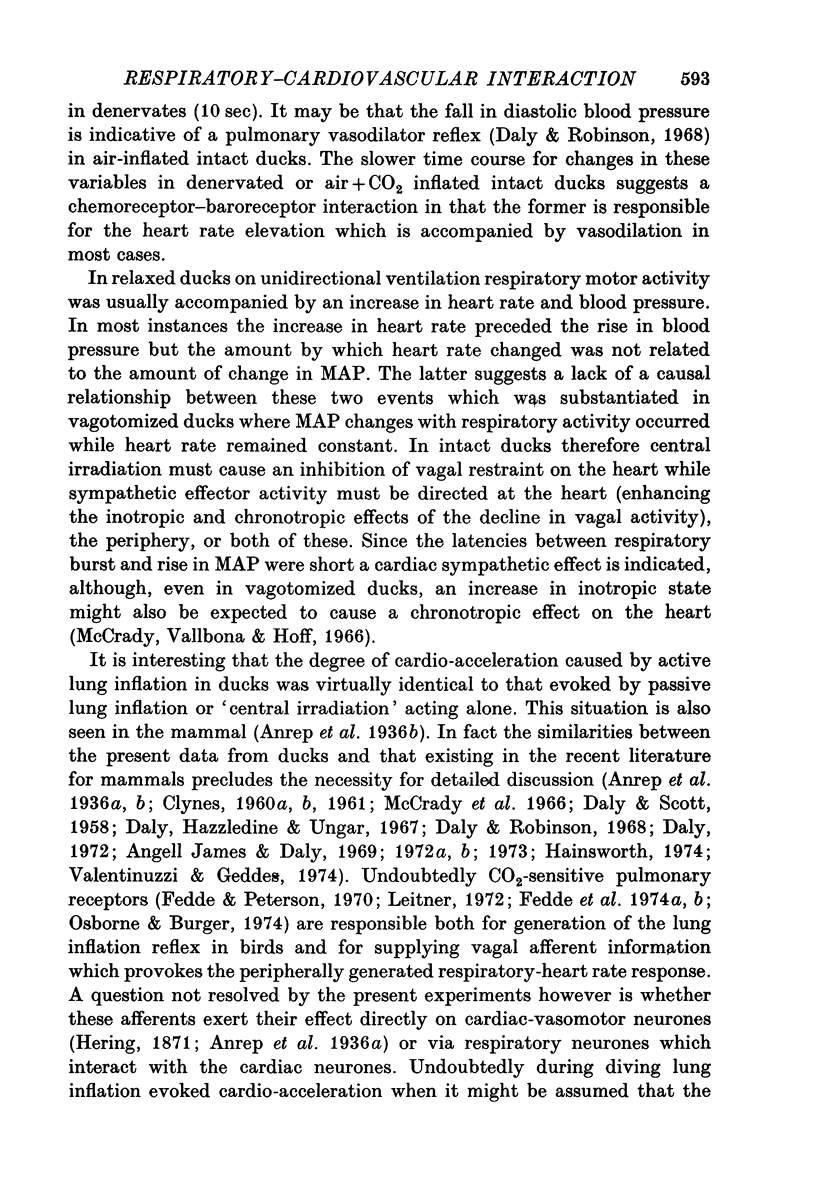

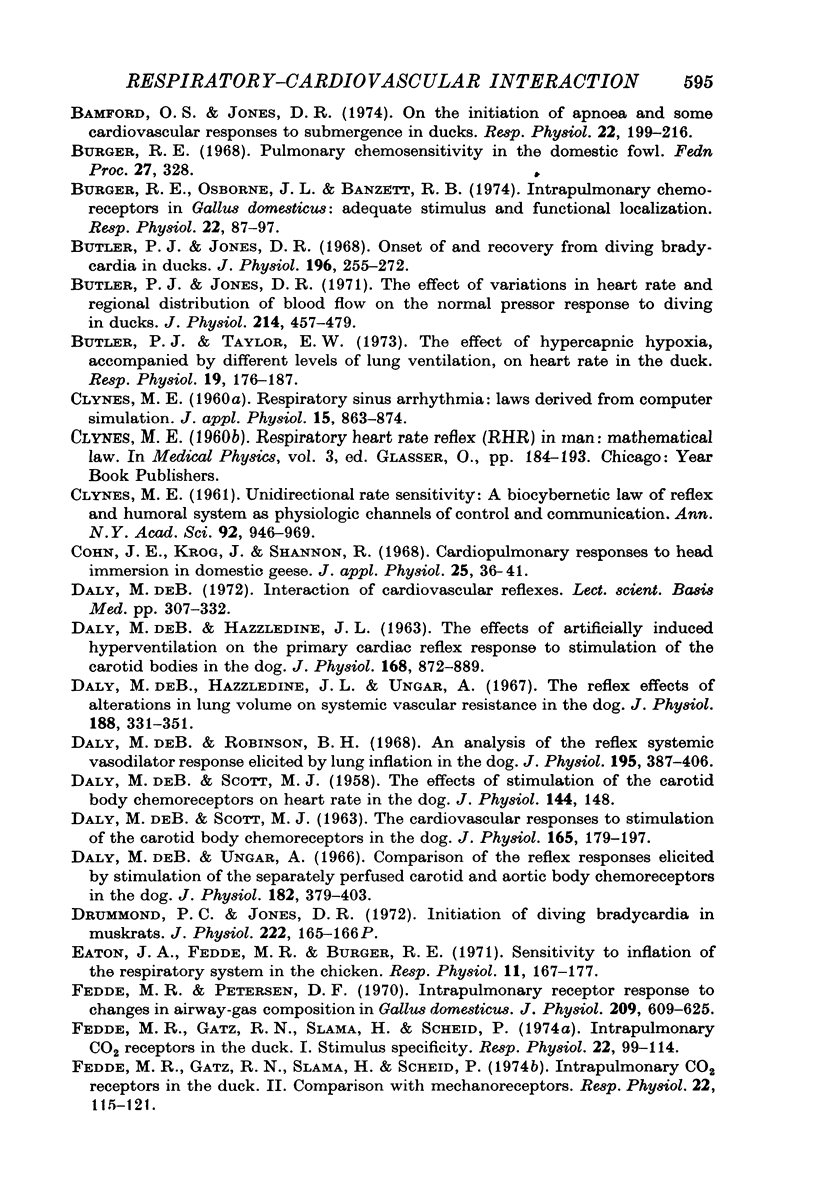
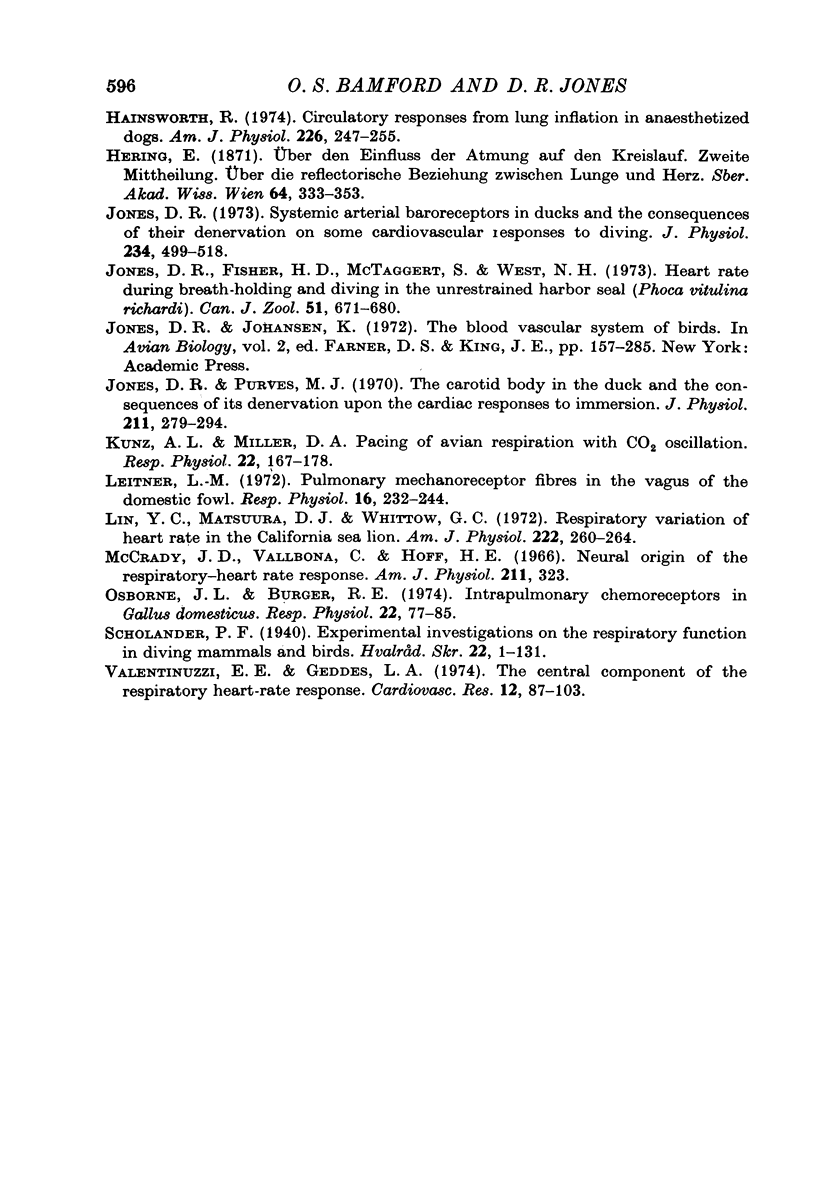
Selected References
These references are in PubMed. This may not be the complete list of references from this article.
- Andersen H. T., Blix A. S. Pharmacological exposure of components in the autonomic control of the diving reflex. Acta Physiol Scand. 1974 Feb;90(2):381–386. doi: 10.1111/j.1748-1716.1974.tb05599.x. [DOI] [PubMed] [Google Scholar]
- Andersen H. T. Physiological adaptations in diving vertebrates. Physiol Rev. 1966 Apr;46(2):212–243. doi: 10.1152/physrev.1966.46.2.212. [DOI] [PubMed] [Google Scholar]
- Angell-James J. E., Daly M. de B. The interaction of reflexes elicited by stimulation of carotid body chemoreceptors and receptors in the nasal mucosa affecting respiration and pulse interval in the dog. J Physiol. 1973 Feb;229(1):133–149. doi: 10.1113/jphysiol.1973.sp010131. [DOI] [PMC free article] [PubMed] [Google Scholar]
- Bamford O. S., Jones D. R. On the initiation of apnoea and some cardiovascular responses to submergence in ducks. Respir Physiol. 1974 Oct;22(1-2):199–216. doi: 10.1016/0034-5687(74)90058-9. [DOI] [PubMed] [Google Scholar]
- Burger R. E., Osborne J. L., Banzett R. B. Intrapulmonary chemoreceptors in Gallus domesticus: adequate stimulus and functional localization. Respir Physiol. 1974 Oct;22(1-2):87–97. doi: 10.1016/0034-5687(74)90049-8. [DOI] [PubMed] [Google Scholar]
- Butler P. J., Jones D. R. Onset of and recovery from diving bradycardia in ducks. J Physiol. 1968 May;196(2):255–272. doi: 10.1113/jphysiol.1968.sp008505. [DOI] [PMC free article] [PubMed] [Google Scholar]
- Butler P. J., Jones D. R. The effect of variations in heart rate and regional distribution of blood flow on the normal pressor response to diving in ducks. J Physiol. 1971 May;214(3):457–479. doi: 10.1113/jphysiol.1971.sp009444. [DOI] [PMC free article] [PubMed] [Google Scholar]
- Butler P. J., Taylor E. W. The effect of hypercapnic hypoxia, accompanied by different levels of lung ventilation, on heart rate in the duck. Respir Physiol. 1973 Nov;19(2):176–187. doi: 10.1016/0034-5687(73)90076-5. [DOI] [PubMed] [Google Scholar]
- CLYNES M. Respiratory sinus arrhythmia: laws derived from computer simulation. J Appl Physiol. 1960 Sep;15:863–874. doi: 10.1152/jappl.1960.15.5.863. [DOI] [PubMed] [Google Scholar]
- CLYNES M. Unidirectional rate sensitivity: a biocybernetic law of reflex and humoral systems as physiologic channels of control and communication. Ann N Y Acad Sci. 1961 Jul 28;92:946–969. doi: 10.1111/j.1749-6632.1961.tb40968.x. [DOI] [PubMed] [Google Scholar]
- Cohn J. E., Krog J., Shannon R. Cardiopulmonary responses to head immersion in domestic geese. J Appl Physiol. 1968 Jul;25(1):36–41. doi: 10.1152/jappl.1968.25.1.36. [DOI] [PubMed] [Google Scholar]
- DALY M. D., HAZZLEDINE J. L. THE EFFECTS OF ARTIFICIALLY INDUCED HYPERVENTILATION ON THE PRIMARY CARDIAC REFLEX RESPONSE TO STIMULATION OF THE CAROTID BODIES IN THE DOG. J Physiol. 1963 Oct;168:872–889. doi: 10.1113/jphysiol.1963.sp007228. [DOI] [PMC free article] [PubMed] [Google Scholar]
- DALY M. D., SCOTT M. J. The cardiovascular responses to stimulation of the carotid body chemoreceptors in the dog. J Physiol. 1963 Jan;165:179–197. doi: 10.1113/jphysiol.1963.sp007051. [DOI] [PMC free article] [PubMed] [Google Scholar]
- DE DALY M. B., SCOTT M. J. The effects of stimulation of the carotid body chemoreceptors on heart rate in the dog. J Physiol. 1958 Nov 10;144(1):148–166. doi: 10.1113/jphysiol.1958.sp006092. [DOI] [PMC free article] [PubMed] [Google Scholar]
- Daly M. D., Robinson B. H. An analysis of the reflex systemic vasodilator response elicited by lung inflation in the dog. J Physiol. 1968 Mar;195(2):387–406. doi: 10.1113/jphysiol.1968.sp008464. [DOI] [PMC free article] [PubMed] [Google Scholar]
- Daly M., Ungar A. Comparison of the reflex responses elicited by stimulation of the separately perfused carotid and aortic body chemoreceptors in the dog. J Physiol. 1966 Jan;182(2):379–403. doi: 10.1113/jphysiol.1966.sp007828. [DOI] [PMC free article] [PubMed] [Google Scholar]
- De Burgh Daly M., Hazzledine J. L., Ungar A. The reflex effects of alterations in lung volume on systemic vascular resistance in the dog. J Physiol. 1967 Feb;188(3):331–351. doi: 10.1113/jphysiol.1967.sp008142. [DOI] [PMC free article] [PubMed] [Google Scholar]
- Drummond P. C., Jones D. R. Initiation of diving bradycardia in muskrats. J Physiol. 1972 Apr;222(2):165P–166P. [PubMed] [Google Scholar]
- Eaton J. A., Jr, Fedde M. R., Burger R. E. Sensitivity to inflation of the respiratory system in the chicken. Respir Physiol. 1971 Jan;11(2):167–177. doi: 10.1016/0034-5687(71)90021-1. [DOI] [PubMed] [Google Scholar]
- Fedde M. R., Gatz R. N., Slama H., Scheid P. Intrapulmonary C02 receptors in the duck: II. Comparison with mechanoreceptors. Respir Physiol. 1974 Oct;22(1-2):115–121. doi: 10.1016/0034-5687(74)90051-6. [DOI] [PubMed] [Google Scholar]
- Fedde M. R., Gatz R. N., Slama H., Scheid P. Intrapulmonary CO2 receptors in the duck: I. Stimulus specificity. Respir Physiol. 1974 Oct;22(1-2):99–114. doi: 10.1016/0034-5687(74)90050-4. [DOI] [PubMed] [Google Scholar]
- Fedde M. R., Peterson D. F. Intrapulmonary receptor response to changes in airway-gas composition in Gallus domesticus. J Physiol. 1970 Aug;209(3):609–625. doi: 10.1113/jphysiol.1970.sp009182. [DOI] [PMC free article] [PubMed] [Google Scholar]
- Hainsworth R. Circulatory responses from lung inflation in anesthetized dogs. Am J Physiol. 1974 Feb;226(2):247–255. doi: 10.1152/ajplegacy.1974.226.2.247. [DOI] [PubMed] [Google Scholar]
- James J. E., De Burgh Daly M. Reflex respiratory and cardiovascular effects of stimulation of receptors in the nose of the dog. J Physiol. 1972 Feb;220(3):673–696. doi: 10.1113/jphysiol.1972.sp009729. [DOI] [PMC free article] [PubMed] [Google Scholar]
- James J. E., De Burgh Daly M. Some mechanisms involved in the cardiovascular adaptations to diving. Symp Soc Exp Biol. 1972;26:313–341. [PubMed] [Google Scholar]
- Jones D. R., Fisher H. D., McTaggart S., West N. H. Heart rate during breath-holding and diving in the unrestrained harbor seal (Phoco vitulina richardi). Can J Zool. 1973 Jul;51(7):671–680. doi: 10.1139/z73-101. [DOI] [PubMed] [Google Scholar]
- Jones D. R., Purves M. J. The carotid body in the duck and the consequences of its denervation upon the cardiac responses to immersion. J Physiol. 1970 Dec;211(2):279–294. doi: 10.1113/jphysiol.1970.sp009279. [DOI] [PMC free article] [PubMed] [Google Scholar]
- Jones D. R. Systemic arterial baroreceptors in ducks and the consequences of their denervation on some cardiovascular responses to diving. J Physiol. 1973 Nov;234(3):499–518. doi: 10.1113/jphysiol.1973.sp010357. [DOI] [PMC free article] [PubMed] [Google Scholar]
- Leitner L. M. Pulmonary mechanoreceptor fibres in the vagus of the domestic fowl. Respir Physiol. 1972 Oct;16(2):232–244. doi: 10.1016/0034-5687(72)90053-9. [DOI] [PubMed] [Google Scholar]
- Lin Y. C., Matsuura D. T., Whittow G. C. Respiratory variation of heart rate in the California sea lion. Am J Physiol. 1972 Feb;222(2):260–264. doi: 10.1152/ajplegacy.1972.222.2.260. [DOI] [PubMed] [Google Scholar]
- McCrady J. D., Vallbona C., Hoff H. E. Neural origin of the respiratory-heart rate response. Am J Physiol. 1966 Aug;211(2):323–328. doi: 10.1152/ajplegacy.1966.211.2.323. [DOI] [PubMed] [Google Scholar]
- Osborne J. L., Burger R. E. Intrapulmonary chemoreceptors in Gallus domesticus. Respir Physiol. 1974 Oct;22(1-2):77–85. doi: 10.1016/0034-5687(74)90048-6. [DOI] [PubMed] [Google Scholar]
- Valentinuzzi M. E., Geddes L. A. The central component of the respiratory heart-rate response. Cardiovasc Res Cent Bull. 1974 Apr-Jun;12(4):87–103. [PubMed] [Google Scholar]
- de Burgh Daly M. Interaction of cardiovascular reflexes. Sci Basis Med Annu Rev. 1972:307–332. [PubMed] [Google Scholar]


